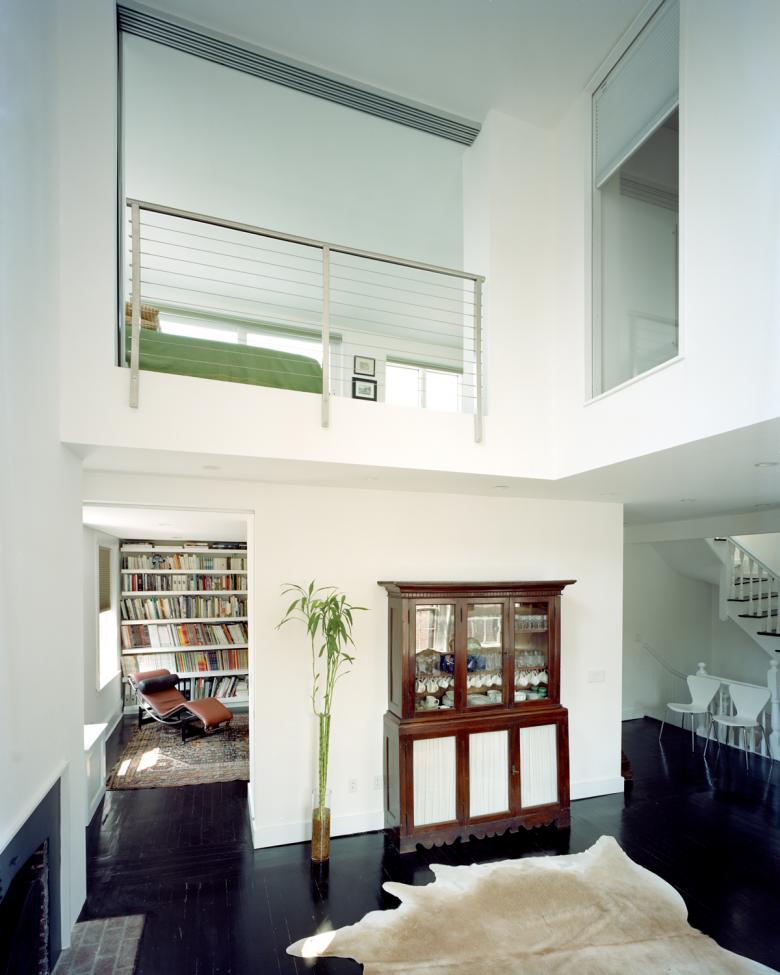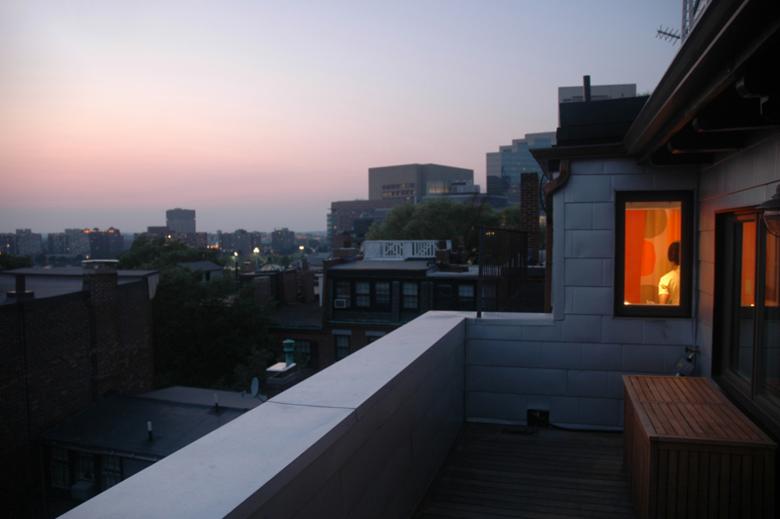ANDERSEN RESIDENCE
Boston, アメリカ
The Andersen residence is located in the historic district of Beacon Hill in Boston. The building was originally built in 1890 and was expanded in 1920. It is an austere structure constructed of load-bearing masonry walls incorporating wood construction for the floors and the expansion. Sited on one of the highest points of the hill, it is in a prime location in the neighborhood. The project is the top two-floor unit with roof rights.
The approach was simple at the outset: Take advantage of the magnificent views from the rooftop and make the interior more suitable for a growing family. Although the existing conditions had a series of problems, there was one very valuable asset—a double-height living room of approximately 18’ in height.
The zoning ordinances and historic commission restrictions for this neighborhood required an extensive process of negotiations and approvals from the city for any types of building expansion. The careful, selective demolition and structural reconfiguration resulted in a three-bedroom apartment whose layout felt more comfortable, flexible and fluid.
The large floor-to-ceiling pocket doors can be fully opened, transforming the entire apartment into a more spacious and united space. The new green roof is accessible and serves as a great amenity, offering spectacular views of the city. It also provides environmental benefits, including cooling the roof and reducing the water runoff.
The green roof constitutes the key space of this project. Due to the location high on a hill, the apartment has beautiful unobstructed views of the Charles River. In addition, providing a rooftop garden makes it a unique feature in the neighborhood of Beacon Hill.
The project posed many technical challenges. The building’s existing condition not only was insufficient to withstand the additional load of soil, but also was not up to any reasonable standard. A central column and beam (as seen in the photo) were both spatially and structurally problematic. Moreover, the limited budget and regulatory constraints forced us to work within the existing parameters. The existing joists, therefore, were sistered with laminated wood beams, reassigning the transfer of the loads.
The roof assembly consists of a standard rubber roofing and off-the-shelf resin crates. These crates were filled with lightweight soil that is specifically prepared for green roof systems. This green roof, due to its thermal mass, provides an appropriate level of insulation both in the winter and summer, and has a significant impact on the overall energy consumption costs of the property. Furthermore, the roof absorbs about 30% of the water in the wintertime and 70% in the summer.
Project: https://www.ivydesign.associates/#/infinite/
- 年
- 2007











